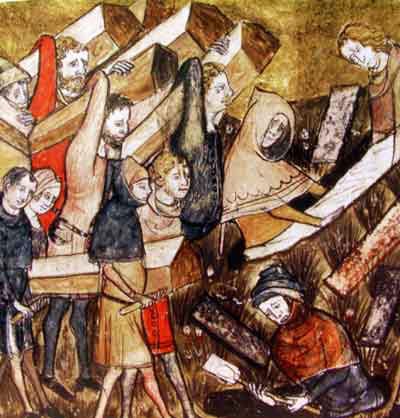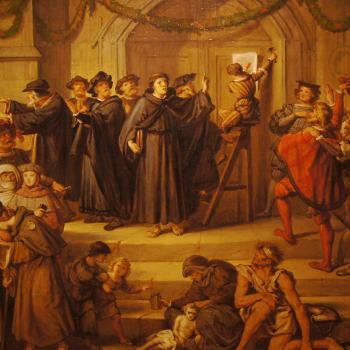- Trending:
- Olympics
- |
- Forgiveness
- |
- Resurrection
- |
- Joy
- |
- Afterlife
- |
- Trump

RELIGION LIBRARY
Islam
Missions and Expansion
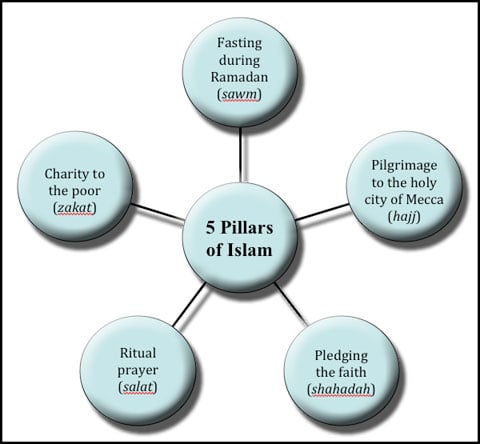
In its first one thousand years, Islam spread to nearly every part of the globe. In places as different as Mombasa and Brunei, local languages, customs, and cultures absorbed Islamic culture into their own authentic histories and rhythms. They embraced the sunnah, or way of life of the Prophet, and the communal rhythms of the Five Pillars of Islam, without a loss of identity. Islam allows for an almost dizzying variety of opinions and practices, and this is due in no small part to the influence of the Murjiyah, an attitude of tolerance developed amidst early Islamic conflict.
The assassination of the third caliph Uthman in 656 led to the fitna, the first civil war in Islam. There were many competing sides in that war, including groups of secessionists known as the Khariji, or "those who went out." The Khariji insisted that the community follow very strict norms in deciding who was a true Muslim, and who should be excommunicated. In response, some Sunni and Shi'i Muslims adopted a highly tolerant stance that not only accepted deviation from strict Islamic norms, but made a positive effort to accommodate differences. These people were called the Murjiyah, or procrastinators, from the Arabic word irja', or postponement. The Murjiyah believed in postponing the judgment of a person's worthiness, leaving it to God on the Last Day.
| Some competing sides in the fitna (first Islamic civil war) |
|
| Khariji | Murijuyah |
| ("those who went out") | ("procrastinators") |
| Strict norms for determining who is Muslim | Tolerant norms and acceptance of differences; defer another's judgment to God |
In their view, a Muslim was simply a person who recognized the community as Muslim, and professed the shahadah, confessing that "there is no god but God and Muhammad is his prophet." It may be that this highly tolerant formula of the Murjiyah eased the spread of Islam. In many ways it accounts for Islam's lasting presence in so many different places.
In the 7th and 8th centuries, within just a few generations of the Prophet Muhammad's death, Islam spread rapidly both east and west, in part due to the power vacuum created by the long war between the Byzantine and Persian empires. In the west, Arab armies conquered Jerusalem in 638, and controlled Syria, Palestine, and Egypt by 641. Highly skilled troops recruited from Syria conquered north Africa within the next fifty years, and north African troops conquered al-Andalus (Spain), in the early 8th century. The western expansion of Islam was halted in Tours, France by the troops of Frankish King Charles "The Hammer" Martel. To the east, the Persian Empire virtually collapsed, allowing Islamic conquerors to accomplish a swift eastern expansion, reaching Afghanistan in the 8th century.
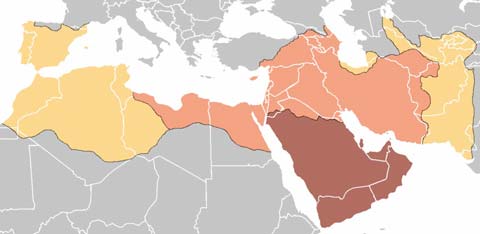
| The Islamic World expansion, 622-750 | |
| Expansion 622-632 | |
| Expansion 632-661 | |
| Expansion 661-750 | |
The astounding early successes of Muslim invaders appeared to confirm the Quranic view that a society that submits to God will prosper, and they established Islamic rule in the conquered areas. The response of the conquered peoples varied. Many voluntarily converted to Islam, which conferred full citizenship in the empire. Christians and Jews were given full legal protection with no requirement to convert, but they were required to pay special taxes that were higher than the Islamic zakat tax. Those who worshipped local gods were forced to convert under threat of death.
Islam spread in a number of ways. Muslim armies brought Islam to north Africa and Spain, the Caucasus and the Middle Volga, Iran, central Asia and western Afghanistan. Merchants, traders, sailors, and missionaries brought Islam to the port cities of east Africa and southeast Asia, and traders carried Islam into the capital cities of the kingdoms of the Sahel, on the southern border of the Sahara. Immigrant Muslims settled in the port cities, and filled new towns and garrisons established in the expanding empires of Islam. Settlers, traders, and missionaries brought Islam to south Asia and Nepal.
In the 8th to 10th centuries, Muslim traders from North Africa crossed the Sahara to open new markets in the African kingdoms along the southernmost border of the desert, which the Muslims called the Sahel (Arabic, sahil) or "shore" of the desert. Muslim settlers arrived in the port cities of east Africa in the 8th century, including Ethiopia and Somalia. By the 11th century, traders had begun making their homes in the capital cities of the kingdoms of the Sahel, converting the kings to Islam, and ultimately the local populations.
Muslim armies arrived in central Asia as early as the 7th century, and invaded the Caucasus and the Middle Volga in the 7th century, while Muslim merchants and traders from the Middle East and central Asia arrived in China by land and sea. The progress of Islam's expansion in the Caucasus and central Asia was very slow. In the Caucasus, militarily powerful opponents and exceptional religious tolerance caused Islam to contribute to the region's religious diversity without displacing existing religions. Sunni and Shi'i Muslims both gained a foothold while many in the population remained Christian. Sufi orders popularized Islam in many areas. Central Asia also maintained exceptional religious diversity, with Muslim armies, missionaries, diplomats, and Sufi orders adding Islam to the region's character.
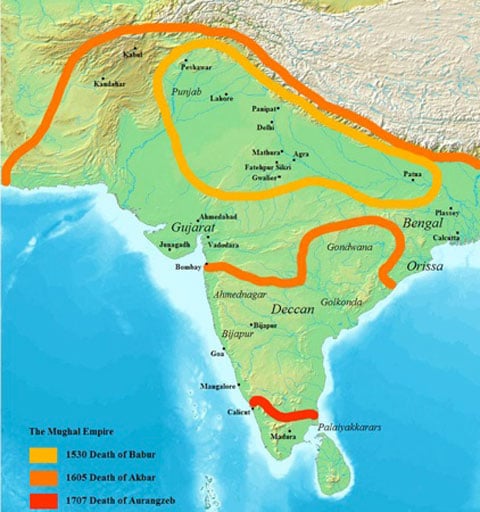
Tradition holds that Arab settlers and traders arrived in south Asia in the 7th century, and Muslim armies invaded western Afghanistan. Settlers and traders first populated the western port cities of south Asia. Muslim traders were soon found in all the port cities, east and west, and by the 10th century, Muslim merchants had settled in all the major cities of the interior while Muslim armies invaded from central Asia. Ismaili missionaries arrived in the 11th century, and an Islamic empire, the Mughal Empire, was in place in south Asia by the 16th century. Muslim settlers arrived in Nepal in the 17th century.
Little is known of the arrival of Islam in southeast Asia, but possibly it arrived with Muslim sailors as early as the 7th century, and slowly Muslims came to dominate maritime trade, once the lifeblood of the region. In a slow and not yet well-understood process, Islam acquired enormous significance in this part of the world. Today, nearly one-third of the world's Muslims live in southeast Asia, and Indonesia is home to the largest community of Muslims in the world.
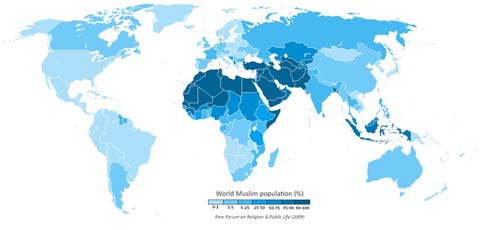
Legend has it that Muslim explorers from west Africa arrived in the Americas some time in the 10th century. If they did, they did not settle. There is some documentary evidence that Muslims were in Spanish America before 1550, and Muslims came to the Americas in the European conquests of the 16th to 18th centuries as sailors and slaves. It has even been estimated that Muslims might have comprised as much as 15-20 percent of the west African slaves brought to the American colonies.
In the 20th century, the dislocating effects of colonialism and global conflicts have created a Muslim diaspora, with many Muslims finding new homes in western Europe and the United States. Muslims began settling in Europe in the 20th century, first when former colonial troops found homes in the cities of the former colonial powers, and then after World War II as laborers, students, and professionals. More recently, political refugees have sought homes in Europe. Currently, European-born generations are coming of age.
Study Questions:
1. What are the five pillars of Islam?
2. What did the Murjiyah believe qualified one as a Muslim?
3. How did Islam spread?
4. Where are Muslims located in the world today? Was there ever a strong presence in the Americas?




